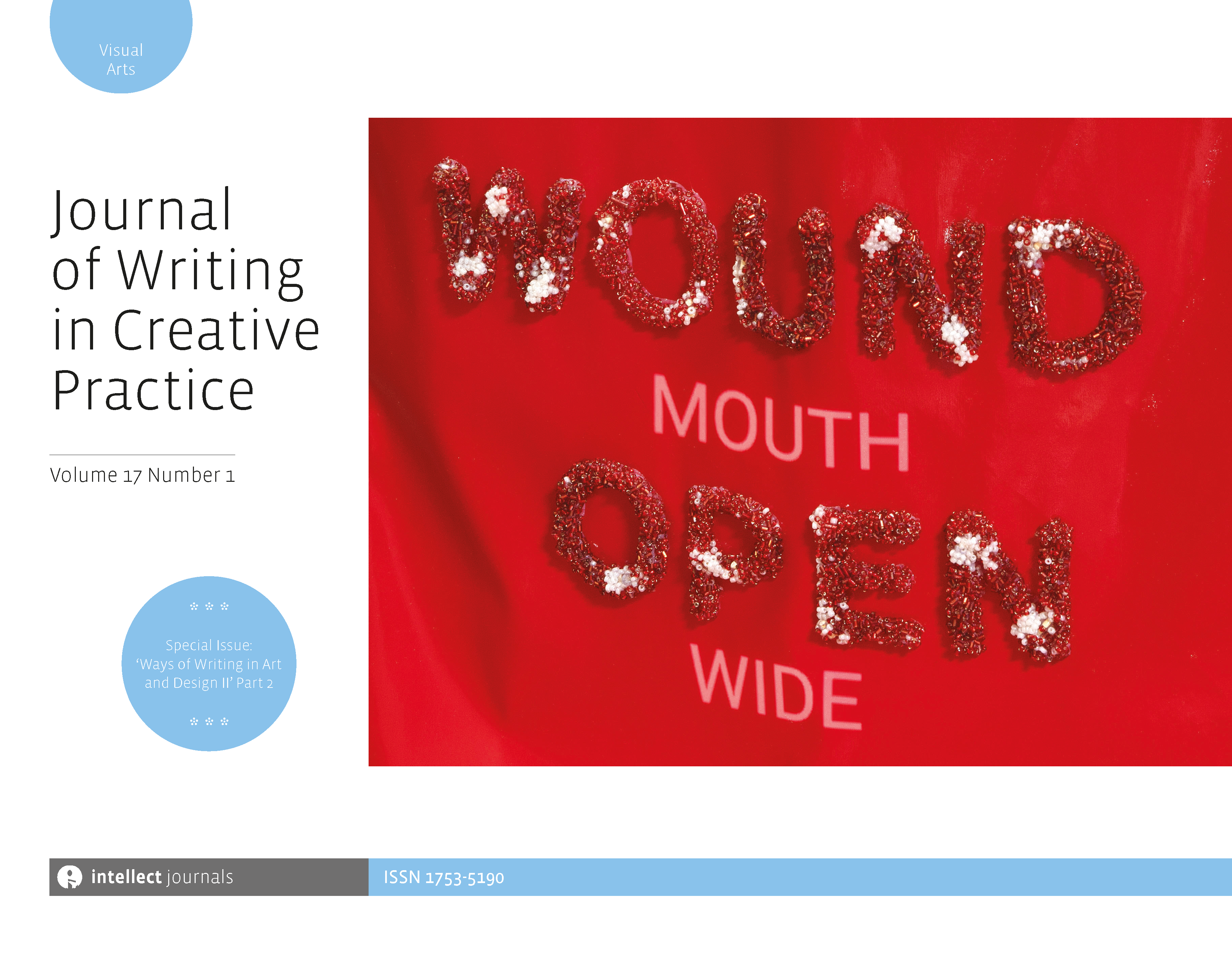
Full text loading...

A writing/making divide, within the broader theory/practice myth, is part of the historical narrative in art and design education that both clashes with, and persists in, current practices of writing in art and design. The theory/practice myth separates thinking from doing, head from hand, and writing from making, causing internal frictions in art and design subjects. This article provides a historical and contextual mapping of the writing/making binary in creative practice, drawing on Ivor Goodson’s (1993, 1995, 1997, 2002) work on ‘antecedent subject subcultures’ to discuss the formation and maintenance of subject cultures and – ultimately – their potential to change.

Article metrics loading...

Full text loading...
References


Data & Media loading...

Publication Date:
https://doi.org/10.1386/jwcp_00035_1 Published content will be available immediately after check-out or when it is released in case of a pre-order. Please make sure to be logged in to see all available purchase options.